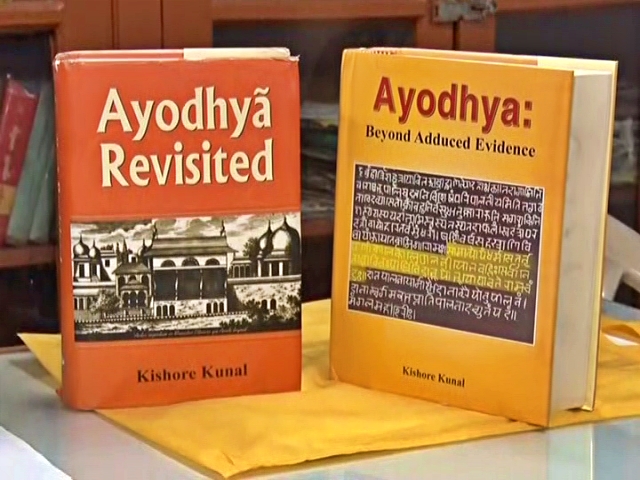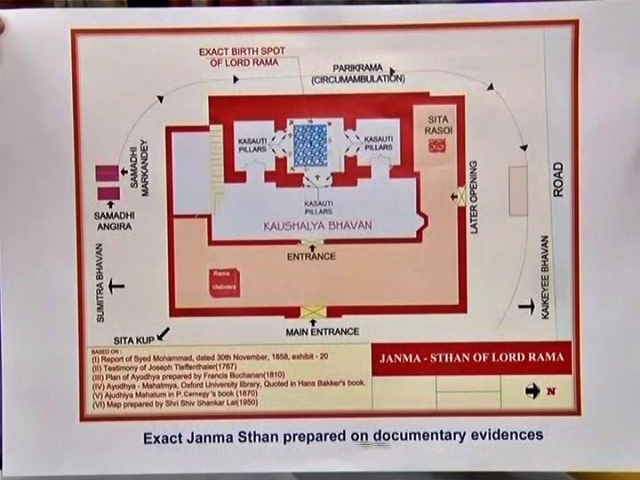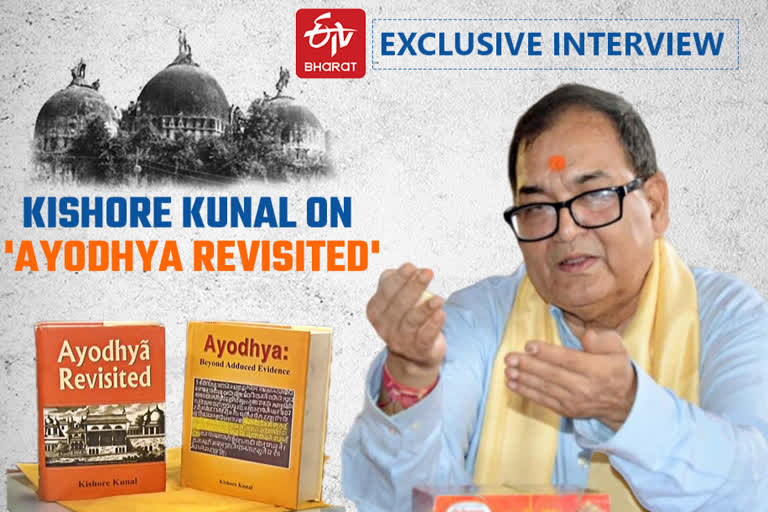Uttar Pradesh: With a verdict on the Ayodhya dispute expected to be delivered before the retirement of Chief Justice of India Ranjan Gogoi on November 17, Kishore Kunal, a retired officer of the Indian Police Service who has written two books on the controversial issue said that he has evidence proving that the disputed land is actually Lord Ram's birthplace.
The long-drawn dispute, which stretches back more than a century, is one of India's thorniest court cases and goes to the heart of its identity politics.
Speaking exclusively to ETV Bharat, Kishore Kunal, who was appointed as the Officer on Special Duty by former Prime Minister V. P. Singh to mediate between the Vishwa Hindu Parishad and the Babri Masjid Action Committee on the Ayodhya dispute, said, "Since the Court (Supreme Court) kept asking for a proof on the birthplace of Lord Ram, I gathered evidence and presented it in the court. I provided five concrete pieces of evidence to the Court along with a beautiful map suggesting that Lord Ram's birthplace was exactly where the Mosque lie."

Kunal has also presented the said map in his book aptly titled 'Ayodhya Revisited' which was released in 2016.
On Nirmohi Akhara and Ram Lalla - the two main Hindu parties in the case - missing out on such important pieces of evidence, Kunal said, "No, they didn't notice these details. One can only notice these minute pieces of evidence if they go through them repeatedly. The one special quality that I have is that I have studied both History and Sanskrit. I have also been an IPS officer for years. These qualities helped me study the case in detail. Till now no one had noticed this very important detail.
"There are two more important pieces of evidence. There was this one evidence that I had accessed from the British library about a month ago. It was a map drawn by Scottish historian George Buchanan. It was in this map that he suggested Lord Ram's birthplace being exactly where the three domes were built," he added while holding the map in his hand.

Also read: Sec 125 CrPC is a tool to realise gender justice: Allahabad HC
When asked if he was satisfied with the way the case dragged for years in courtrooms, he said, "Given the complexity of the case, it took years for the Courts to reach a conclusion."
Elaborating on his experience as OSD in the dispute, Kinal said, " The dispute began in 1950 and the Muslims weren't really interested in the case until the Mosque was demolished in 1992. It was then that they started getting serious about the issue, and their concern stemmed from the belief that if they let go of the said Mosque, similar demands would arise across the state."



